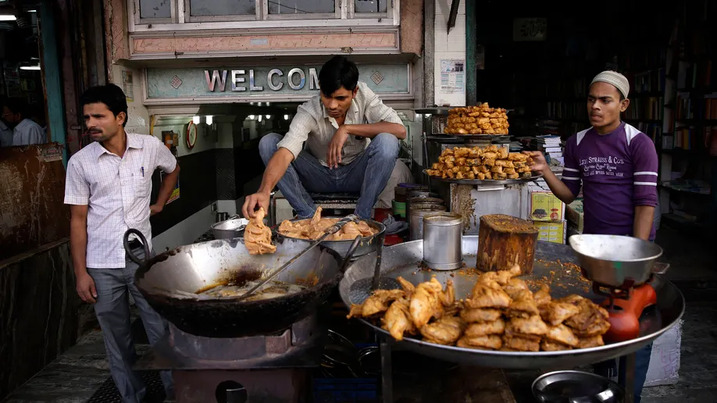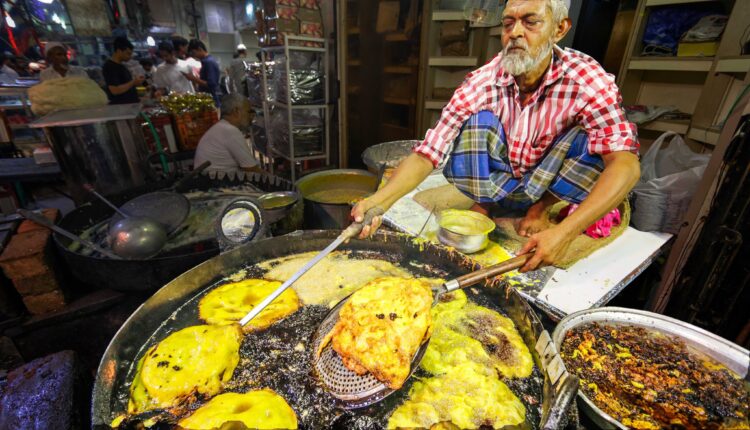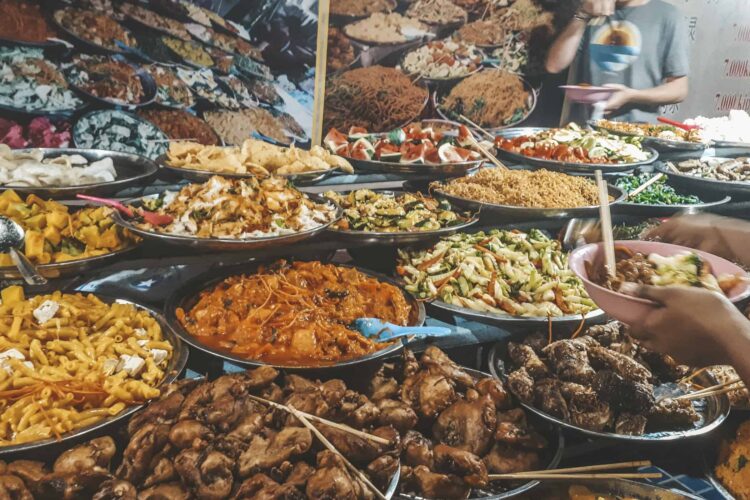What is Traveler’s Diarrhea?
Traveler’s diarrhea is a gastrointestinal ailment characterized by abdominal cramps and loose, watery stools, often resulting from the consumption of unfamiliar food or water in foreign locations. When visiting regions with varying sanitary conditions or climates compared to your home environment, the risk of encountering traveler’s diarrhea increases. This condition is most frequently contracted in areas such as:
- Mexico
- Central America
- South America
- Africa
- the Middle East
- Most of Asia
The causes of traveler’s diarrhea can include bacterial, viral, or parasitic infections. Typically, traveler’s diarrhea resolves on its own within a few days, but it can lead to dehydration, especially risky for children. Furthermore, it is often contagious and can spread from person to person, regardless of its underlying cause.
What are the Symptoms of Traveler’s Diarrhea?
The predominant symptoms of traveler’s diarrhea encompass loose, watery stools and abdominal cramps. Additional symptoms may vary depending on the specific cause and can encompass:
- Nausea
- Vomiting
- Fever
- Bloating
- Excessive gas
- Loss of appetite
- Urgent need to defecate
While these symptoms are common, there are warning signs that necessitate immediate medical attention, including:
- Severe, unbearable abdominal or rectal pain
- Prolonged vomiting lasting more than four hours, preventing the retention of fluids
- A fever exceeding 102˚F (39˚C)
- Presence of blood in stools
- Indications of dehydration
How is Traveler’s Diarrhea Diagnosed?
If traveler’s diarrhea persists beyond three days or worsens, it is advisable to consult a healthcare professional. During the appointment, inform the doctor of recent travel experiences. They will conduct a physical examination, including temperature measurement and abdominal palpation. Stool tests may be ordered to detect evidence of parasites, and blood tests could be performed to identify potential infections and assess hydration status.
Can Traveler’s Diarrhea Cause Complications?
Dehydration represents the most common complication of traveler’s diarrhea and can be severe. Dehydration occurs when the body loses fluids more rapidly than it can replace them, often exacerbated by vomiting and nausea accompanying diarrhea. Children are particularly vulnerable to dehydration, so it is vital to recognize signs of dehydration in toddlers.
Symptoms of dehydration include:
- Dry mouth
- Increased thirst
- Reduced urine output
- Headache
- Dizziness
- Dry skin
- Confusion
Parasitic infections causing traveler’s diarrhea may require treatment with medications to prevent further complications. These infections can lead to symptoms such as seizures, fever, allergic reactions, and, in some cases, the migration of parasite eggs to various parts of the body. Specific parasites, such as tapeworms, fluke worms, hookworms, and trichinosis worms, may induce a range of additional symptoms and health issues, emphasizing the importance of prompt and appropriate treatment.
If you are going to eat while abroad:
Adhere to a few simple guidelines. These guidelines are essential in regions with water quality concerns and lax health regulations, but they are also beneficial no matter where you travel.
- Consult a Travel and Health Specialist
Doctors specialized in travel medicine can recommend essential vaccines for your journey and offer insights into food safety, health precautions, and prevalent illnesses in your travel destination. Request an antibiotic for treating stomach ailments or traveler’s diarrhea. Packing a precautionary antibiotic is immensely helpful, and I wouldn’t embark on a trip without it. Follow your doctor’s advice regarding vaccines required in regions where viruses are contracted from contaminated food and water. Use good hand hygiene with soap or alcohol. Believe it or not, washing your hands before a meal isn’t just about comfort; it effectively eliminates germs and bacteria accumulated during the day. Especially in places where eating with your hands is customary, be cautious of the water quality. Ensure your hands are dry before you start eating.
- Be Extra Cautious on Short Trips
If your trip is brief, adhere to food safety guidelines diligently. A stomach bug could drastically curtail a short trip. For longer trips, you can exercise more flexibility in your dietary choices. Longer trips can allow you to recover slowly.
- Dine Where the Locals Dine
If the locals frequent a particular eatery, consider it a seal of approval. It’s a reliable strategy for discovering outstanding culinary gems around the world and ensures food safety. Think about it—would people return if the food consistently made them sick? Food vendors understand this, especially when their regular customers are neighborhood residents. Spices and chili, abundant in cuisines like Indian, Sri Lankan, or Thai, can upset your stomach. It’s not a matter of contamination; rather, it’s the unfamiliar mix of spices and intense flavors. If you’re not accustomed to high spice levels, start with small servings and gradually build up your tolerance.
- Follow the Lines
Long queues are indicative of food excellence. People worldwide are dedicated to their favorite local spots and willingly wait for a delectable meal. Extensive lines signify the establishment’s consistency in delivering a high-quality product that patrons adore. Inferior food and unpleasant experiences are bypassed.
- Opt for Fresh and Hot Fare
Hot food is generally safe food. The high cooking temperatures kill most foodborne pathogens, but it’s still essential to exercise caution. Steer clear of undercooked foods, especially when it comes to animal proteins. Undercooked meat poses not only bacterial risks but may also harbor parasites, leading to more severe health complications. A pill won’t resolve that issue. In various parts of the world, eateries prepare large quantities of food and leave it exposed to the sun for extended periods. Food left sitting can become a breeding ground for bacteria, especially in hot weather. When you encounter items on the street or menu that are freshly cooked just before serving, that’s usually the safer option. If you’re concerned, always go for freshly prepared, hot dishes.
- Synchronize Your Meals with the Locals
Certain establishments irresponsibly prepare and leave cooked food at room temperature, compromising food safety. Proper food storage is pivotal, and the longer food sits after cooking, the greater the likelihood of bacterial growth that could lead to illness. Dining when the locals do ensures that more people partake in the food simultaneously, compelling restaurants to cook and serve promptly. Minimal downtime means your food will be hot and fresh, enhancing both its safety and flavor. Everyone has experienced a buffet where dishes gradually deteriorate under heat lamps. Nobody wants that, so avoid it.
- Be Wary of Fresh Fruits and Vegetables
When it comes to fruit, a simple rule applies: if you can peel it, you can eat it. As for raw vegetables, they are usually rinsed with tap water, which can potentially lead to illness. If your trip is short, it’s best to forgo raw vegetables. The sanitary conditions of water can jeopardize the safety of consuming raw vegetables, contingent on your travel destination. If you have reservations about the water quality or your stomach’s resilience, it’s prudent to avoid raw veggies. Some fruits, like apples, are ready-to-eat, while others, such as oranges and bananas, require peeling. Choosing fruits that need peeling can be a savvy move for travelers. It eliminates the need to worry about washing the fruit or the water it might be washed with.
- Scrutinize the Source of Water and Ice
When traveling to regions with water quality concerns, research how ice is produced. Even within the same country, ice-making practices can vary from city to city. For instance, Bangkok uses purified water to make ice delivered to restaurants and street food vendors. However, outside Bangkok, adherence to strict guidelines might be lax. So, exercise caution when it comes to ice in your drinks, desserts, and smoothies. The quality of water plays a pivotal role in your digestive well-being when you’re traveling. It’s not just about drinking straight from the tap, depending on your location. It’s also about the ice in your drinks, indulging in those enticing fresh fruit juices, or even rinsing your mouth while brushing your teeth. Raw vegetables often undergo questionable water treatments.
In Conclusion
Street food is a safe and delightful option, especially when you adhere to the eight rules outlined above. While the possibility of falling ill is always a consideration, I have no second thoughts when I follow these guidelines. When traveling with companions, I recommend reviewing these rules on how to enjoy street food without health concerns and supporting each other in minimizing accidental exposure. Travel with confidence, knowing that delectable street food experiences await savvy travelers.
*The views and opinions expressed on this website are solely those of the original authors and contributors. These views and opinions do not necessarily represent those of Spotter Up Magazine, the administrative staff, and/or any/all contributors to this site.
SOURCE
https://www.healthline.com/health/travelers-diarrhea


